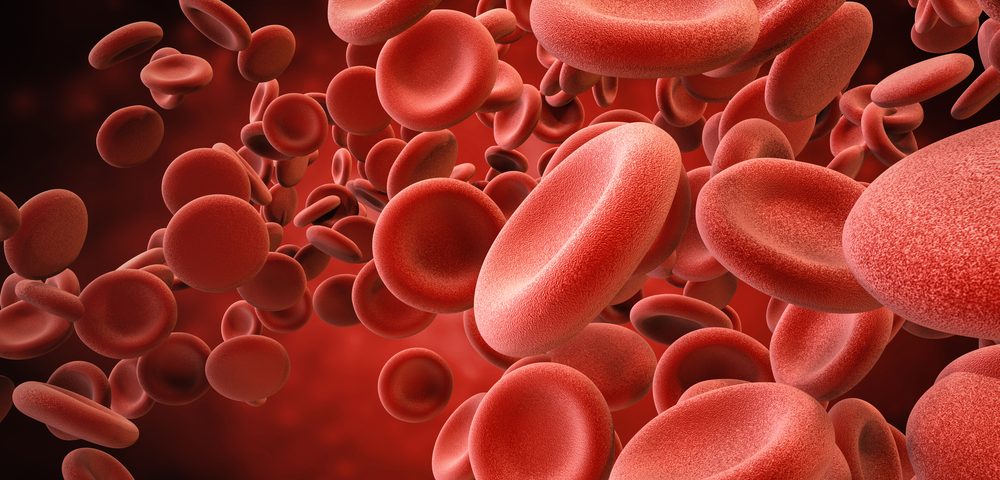When combined with conventional treatment, using fingerprick autologous blood — blood drops collected from a sterilized fingertip — may be a more practical and cost-effective alternative to current ways of treating persistent epithelial defects of the eye, a pilot study from the U.K. reports.
The study, “Finger-Prick Autologous Blood in the Treatment of Persistent Corneal Epithelial Defects,” was published in the journal of Cornea.
Neurotrophic keratitis (NK) is a degenerative disease that affects the cornea, the transparent layer of the eye. The disease is caused by damage to the nerves that innervate the cornea, leading to lesser or a loss of sensation in the cornea, spontaneous breakdown of the corneal epithelium (the outermost layer of the cornea), and difficulty healing.
Certain viruses, such as herpes simplex virus or the herpes zoster virus, and laser eye surgeries are known causes of NK. Diabetes has also been linked to its development.
The disease can be classified, according to the severity of degeneration, into three overlapping stages. Stage 1 is defined by epithelial alterations, stage 2 by persistent epithelial defects (PEDs), and stage 3 by corneal ulcers. Persistent epithelial defects occur when damage to the cornea’s epithelium fails to heal within two weeks.
Managing patients with PEDs can be challenging and require extended follow-up. Current treatment approaches include lubrication, and bandage soft contact lens.
Hemoderivative eye drops using a patient’s own (autologous) serum — the rich protein component of blood — or blood from sources like the umbilical cord have proven effective in managing PEDs.
In vitro (lab) studies suggest that growth factors present in the serum may aid epithelium healing by promoting cellular proliferation and avoiding cell death (apoptosis).
However, accessing this type of treatment can be both complex and costly. In the United Kingdom, patients who apply for autologous serum drops have to wait for a considerable time. And these drops estimated cost, the study reported, is an average of $412 a month.
Collecting whole blood from the fingertips, using a technique called fingerprick autologous blood or FAB, can be an alternative to using a patient’s serum to treat PEDs and dry eye.
According to the researchers, its potential advantages include “reduced cost, potentially increased concentration of growth factors … no requirement for anticoagulants, antibiotics, excipients, or storage facilities, and immediate availability at the point of need.”
The research team assessed the efficacy of using FAB to treat a group of 10 patients (mean age, 72.7) who had PEDs in one eye (for mean of 8.5 months), and who had failed to respond or had an incomplete response to conventional therapies.
PEDs were the result of underlying conditions, including diabetic neurotrophic keratopathy (three patients), herpetic keratitis (three patients), corneal transplant (postpenetrating keratoplasty, one patient), dry eye (keratocon-junctivitis sicca, one patient), postradiotherapy (one patient), and neuropathic ulcer (one patient).
Patients were instructed how to safely collect a drop of blood from a sterilized fingertip using a 28-gauge spring-loaded lancing device (Unistik 3), and apply this to the low interior side of the affected eye (called the lower conjunctival formix) four times a day for four weeks.
Among those who completed the study, six patients (60%) showed a complete healing after the four weeks of treatment (28 days) and no adverse reactions were reported. Another showed a 45% size reduction in epithelial defect size at day 28.
However, three patients had incomplete follow-up data: one discontinued treatment before four weeks, one moved to lubricants only, and one was hospitalized for complications due to diabetes.
“[T]his pilot study is the first to provide data that support the use of FAB in the treatment of patients with chronic PEDs refractory [unresponsive] to conventional treatment,” the researchers wrote.
“Patients who remained compliant with the treatment regime demonstrated complete resolution or significant improvement in PEDs,” they added.
If further studies confirm FAB’s efficacy, this therapy could become a practical and effective additional treatment option, the team concluded.

